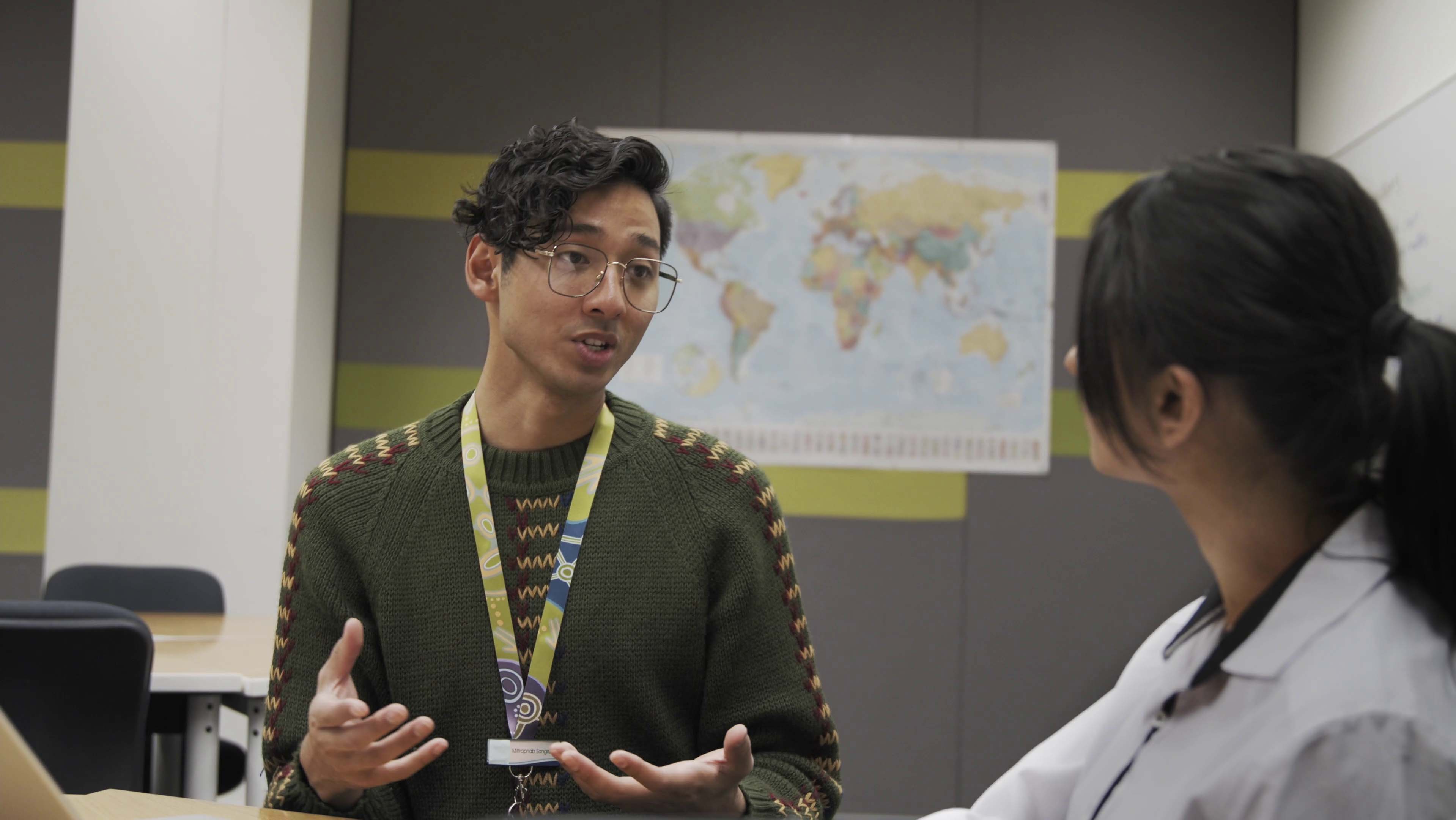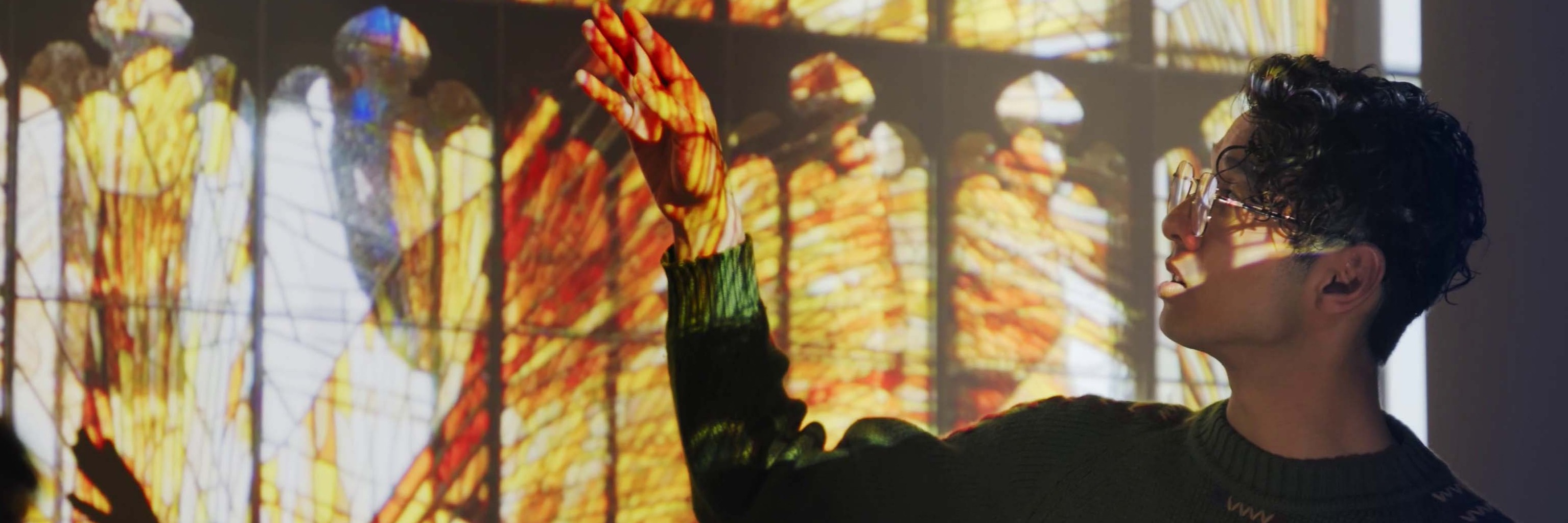How Poom finds connections between humanities, science and volunteering in his career as a teacher.
Standing in front of a classroom can be daunting for many teachers-in-training. Students expect the teacher to know everything about a topic, answer their questions and guide them so they can learn. Poom feels otherwise. He loves helping students get to those moments where they can create connections between their classes and see how they can use their newfound knowledge.
“Humanities lets us explore the human elements of the world and make connections between disciplines. Taking that to a career in teaching means I get to help students have their own lightbulb moments to see how things work and how you can apply what you study to the real world – I get to help make that connection.”
Poom studied a Bachelor of Arts with a major in sociology and also experimented with subjects in science and law. Having explored these disciplines in his earlier years at university, the transition into teaching means he started learning about the topics that inspired him, and then moved on to graduate study to develop the skills to share his knowledge with others. Specialising as a graduate student meant he could cultivate that curiosity while he decided on his calling.
“Not all of us have a calling straight out of high school. I knew there was this world of opportunities out there, but I felt comfort when I finally figured out what this sense of calling was that pulled me towards teaching.” Part of becoming a secondary teacher involves identifying a learning area. This is the discipline most teachers will focus on throughout their career and usually forms out of the undergraduate major. Poom wants to become a humanities teacher so with his Bachelor of Arts, and having studied some science subjects, he can create connections between disciplines and find new ways to think about a problem.
“Take something like geography. You can look at the scientific elements and use environmental science or biology to study how a region changes; or you can look at the human geography to look at what kind of influence people have on an environment and what we could learn about the people who live there. Having studied arts and science subjects in my undergraduate degree, I can link the STEM and humanities concepts to help my students understand how to make these kinds of connections.”
I can link the STEM and humanities concepts to help my students understand how to make these kinds of connections.

This cross-disciplinary approach to learning is a core component of the Melbourne curriculum. You’re encouraged to explore a range of subjects from both within and outside your main area of study, allowing you to broaden your knowledge and perspective to open doors to different careers and industries.
Poom is now applying that discipline knowledge from his undergraduate degree to teaching in the classroom. He’s got the background knowledge and now he’s mastering how to teach it. Through his Master of Teaching, Poom has been able to work in schools across Melbourne to get practical experience in the classroom and working with students.
“Placement meant I was able to teach consistently in the classroom, so working with students to build their knowledge and work on my own planning to make the most of what I was putting into my lesson plans. Placement is this amazing opportunity to reaffirm why you’re becoming a teacher and it’s one of those things where you really benefit from learning by doing. The course prioritises this kind of experience and you’re able to practise everything in the classroom to then come back to university and evaluate what worked and get feedback to improve for next time.”
Having also worked as a volunteer Thai teacher, Poom has always recognised the importance of establishing a community around learning. Being able to connect with fellow future teachers throughout his course means he’s already got a network of other teachers he can learn from and to share his experiences with. Bringing this experience to campus, he’s also worked as a coordinator for the Queer People of Colour Collective. In both these roles, Poom worked as a mentor and helped facilitate discussions as an UMSU representative.
“I’ve moved into a leadership position in the Thai school and get to help with mentoring new teachers. Between volunteering and placement, I’ve had so much experience in the classroom; I get to make a class plan for activity and connect with students. With the Queer People of Colour Collective, I get to be a part of facilitating discussions and mentoring circles so we can talk about our experiences and seek advice from our peers. It helps us build this community.”
